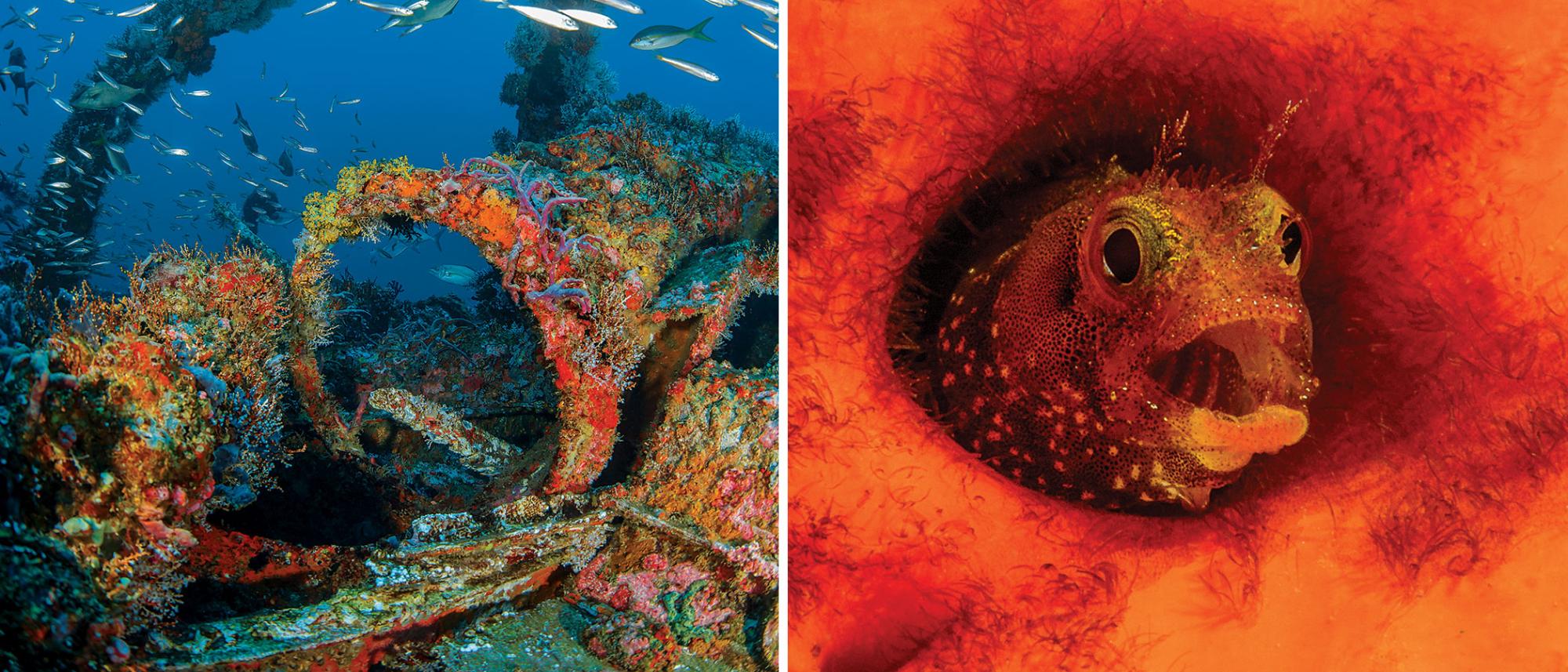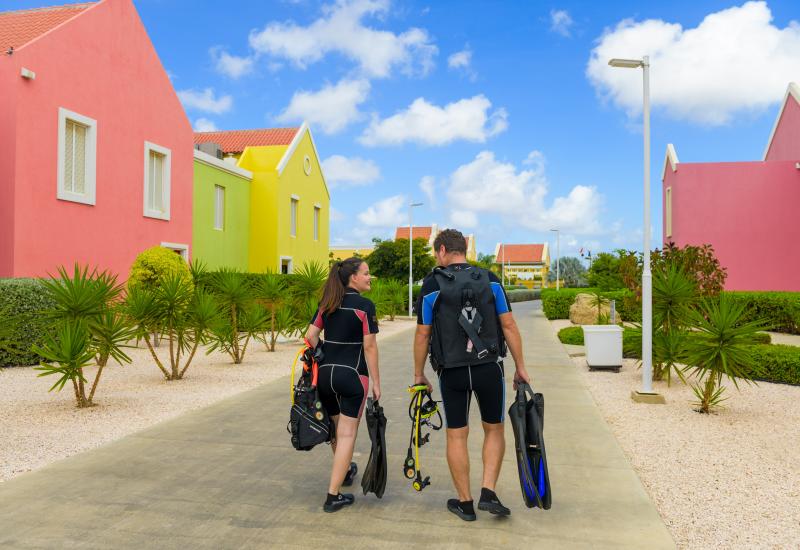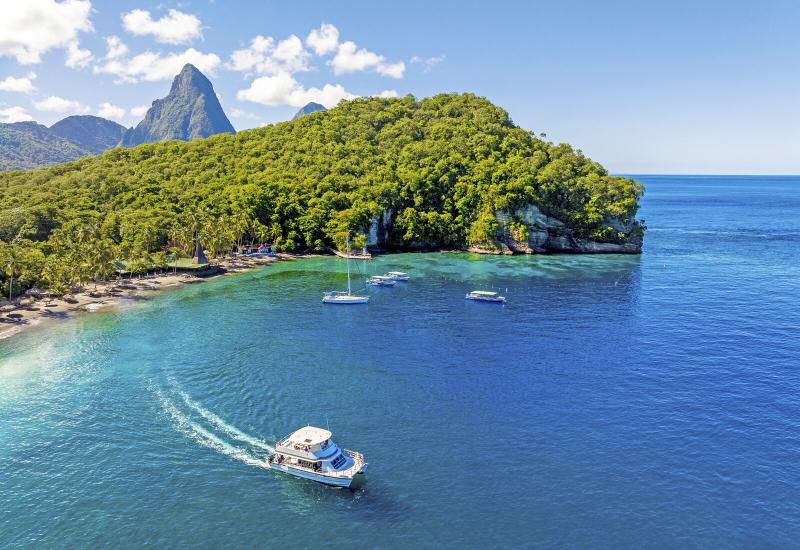Why Tobago is a Standout Caribbean Dive Destination
"Almost there,” the driver says, as our van climbs the final hill above Speyside. Instead of descending toward the town and our resort, however, we abruptly swing into a nightclub parking lot.
Sigh. After a full day’s flight followed by a two-hour-long twisting, stomach-wrenching drive along the Atlantic coast of Tobago, I am far more likely to fall asleep on the bar than indulge in a local beer. I turn groggily toward our enthusiastic driver, and he reassuringly says, “Best view on the island.” OK, then — that, I can handle. I grab my camera and follow as the bar owner leads us past the club to his home. He swings the door open to reveal a modest living space with a major bonus: a gigantic porch with a million-dollar view. Batteaux Bay, which holds many of Tobago’s most famous dive sites, lies before me, dotted with lush green islets.
I’m speechless. The scene resembles a setting half a world away.
Current Events
Early the next morning, I board the boat, filled with optimism. With a full night of sleep under my belt, I am ready to enjoy the diving that this island is famous for. Tobago’s reefs are bathed in nutrients from the South Equatorial Current and the Guiana Current, which includes the outflow of Venezuela’s Orinoco River, and they are said to be unlike anything else in this hemisphere. Between the hearsay and the view from the day before, it’s all I can do to remain in my seat during the dive briefing. We’re headed for Kelleston Drain, a coral garden adjacent to Little Tobago. As the divemaster scans the site, he gestures toward a small rock with a distinct wake on one side. “By the way,” he says, “there might be a little current.”
During our descent, the ocean floor is shuttling past in a blur of red and yellow sponges and orange cup corals. The blast of color and life surrounding us is like nothing I’ve seen in the Caribbean. I work to shoot the stunning display in the current, watching with jealous annoyance as a large hawksbill turtle putters lazily by.
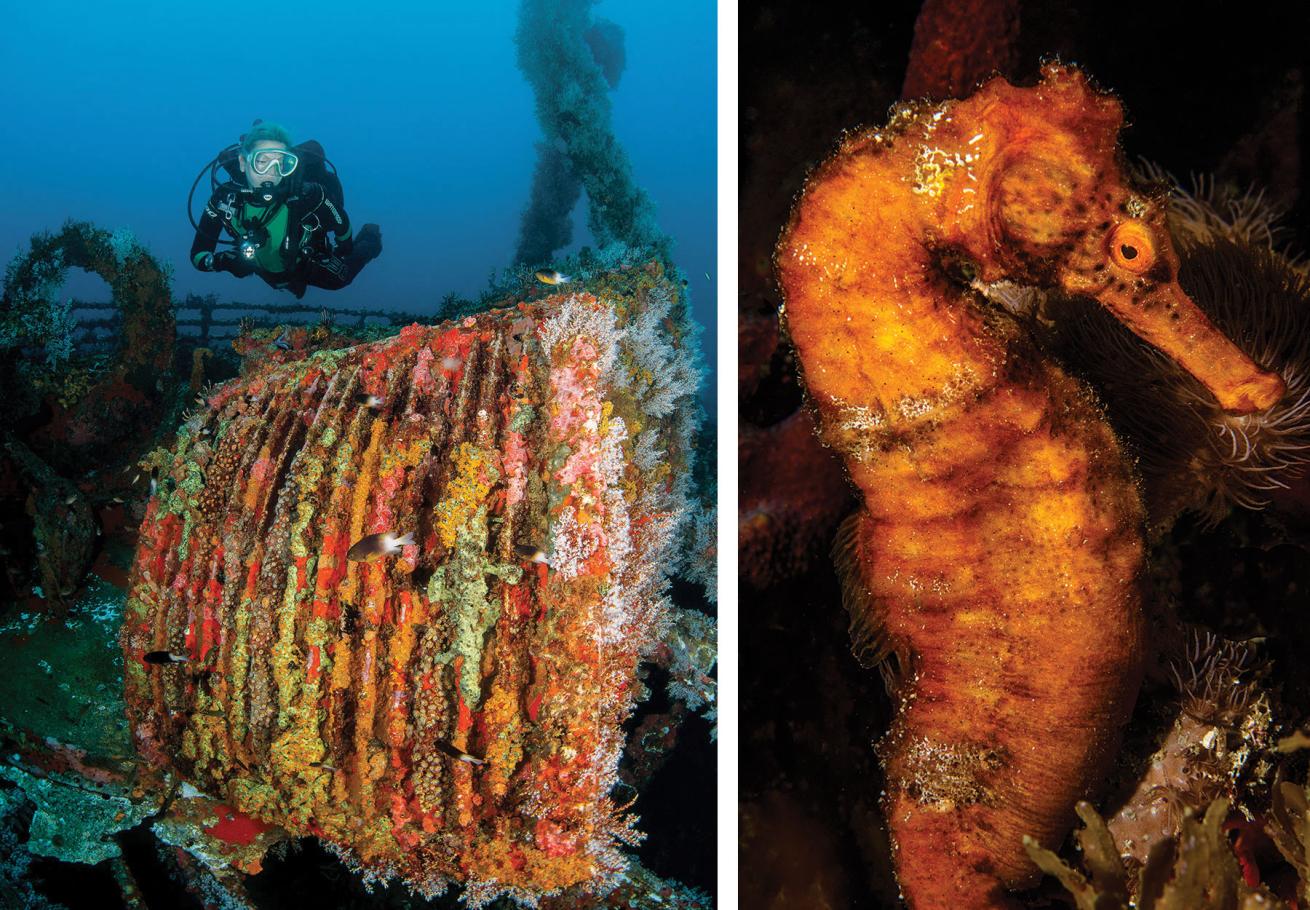
Andy SallmonFrom left: The Maverick is a haven for colorful invertebrates and fish; a seahorse peeps out of its coral-encrusted lair.
Seahorses peeping from the fans, blennies gaping from the coral, cowries crawling on the sponges — there are incredible photo ops everywhere I look. Too soon, the divemaster gestures toward a huge brain coral in the distance, said to be one of the largest in the world. It’s coming rapidly closer, closer — OK, it’s right under me — and I tuck behind it for a few minutes to investigate the behemoth before ascending.
It’s prophetic that I’ve seen a massive coral on my first dive, as I soon realize that — thanks to a one-two punch of calories and water movement — the marine life in Tobago tends to be supersize. On a dive on Bookends, a twinned set of rocks with a cut between, a pair of huge tarpon voraciously patrols in the surf zone. Barrel sponges that I could easily curl into litter the seafloor, and a thigh-size green moray swims unafraid across the reef. Blackjack Hole — where the water teems with baby fish so tiny, they almost look like particulate — also showcases the astonishing benefits of Tobago’s unique, nutrient-rich current. Looking up, I see blackjacks hunting among the aqua waves. Looking down, I admire streams of snapper and wrasse weaving past multihued sponges so torqued by current that they’re a challenge to recognize.
Once I’m acclimated, my guide begins taking me farther afield, at last getting me to the famous site I’ve been waiting for. The Sisters, a cluster of tiny offshore islets renowned for manta ray encounters, may well be Tobago’s most famous dive site. Days before my arrival, a lucky group of divers was pestered by a large manta for two successive dives, so as I stride into the swell, I cockily ready my camera and prepare to be equally hounded. I’m hounded, all right — by green and hawksbill turtles, by my computer when I try to extend my dive as long as possible — but there are no mantas to be seen. Scorpionfish, octopuses and clusters of huge lobsters are tucked into every sponge- and coral-covered crevice, though, so I have plenty to distract myself with until I ascend.
Special Guest
The sheltered sites on the Caribbean side of Tobago offer a respite from current, though they’re no less exciting. The Maverick, a car ferry that was purpose-sunk in 1997, is awash in Indo-Pacific-caliber hues, sponge and cup corals clouded by a swirling school of sweepers. And at nearby Mount Irvine, I’m marveling at an array of nudibranchs, cowries and blennies when I notice the guide gesturing wildly. I turn and come face to face with the manta I’d hoped for so fervently the day before. A 10-foot-wide beauty, the first manta I’ve ever seen on this side of the planet, inspects me carefully, circling slowly before tipping her wings in farewell.
Japanese Gardens is the ideal finale to my visit. As I descend and drift along, the water seems to be getting bluer and clearer by the second. Sponge is layered upon sponge, with tons of gorgonians in between, a riot of color that passes by in a multiknot haze. The fish here seem especially cocky, their motions bearing a slightly mocking Sunday-walk-in-the-park appearance — schools of grunts weave indifferently around us, and angelfish flit lazily from coral to coral.
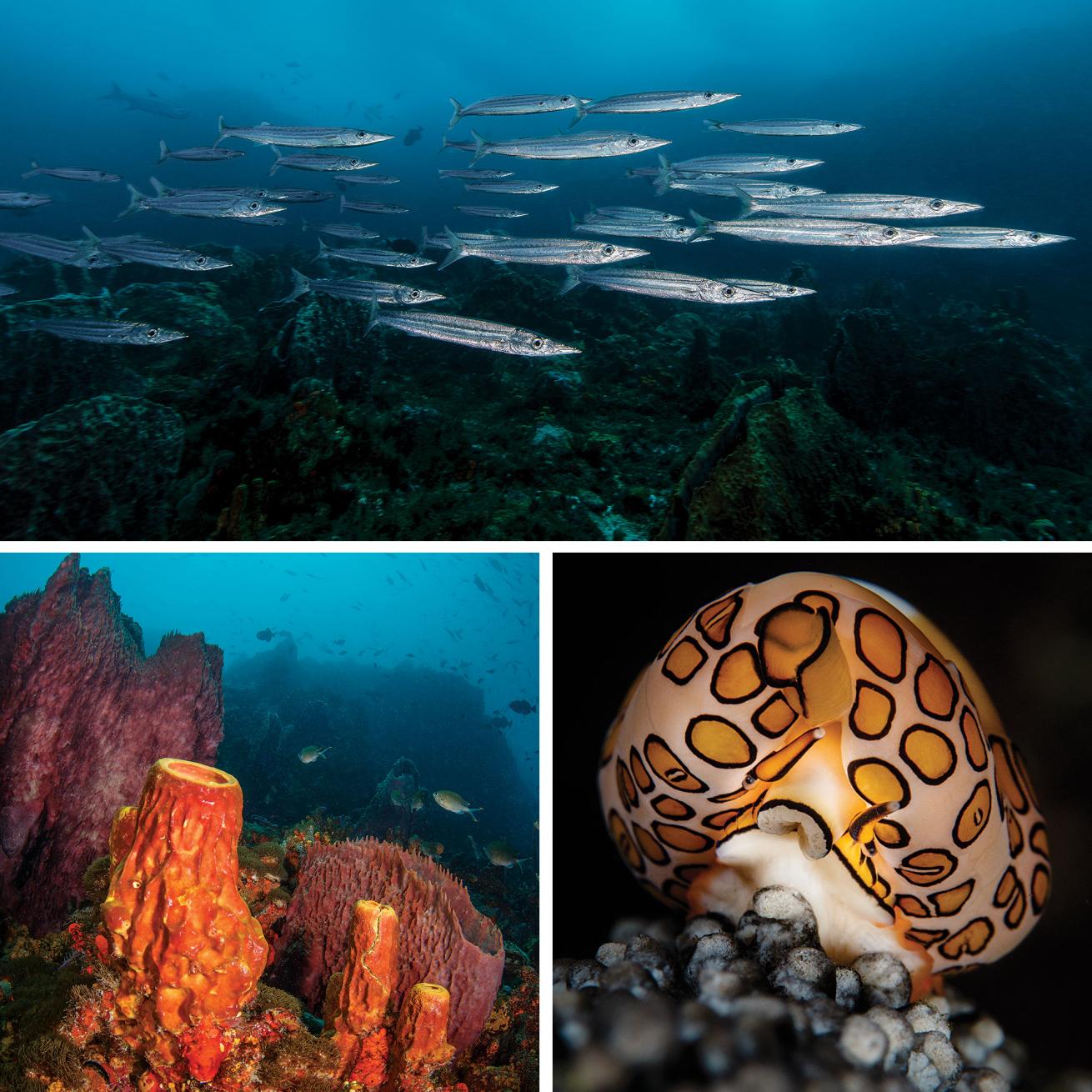
Andy SallmonClockwise from top: Southern sennets hover in stiff current, awaiting prey; colorful cowries are abundant here; Tobago’s sponge and coral density is among the Caribbean’s highest.
The current speeds up, signaling that we are approaching Kamikaze Cut, a narrow channel lined by cup corals. We tuck in and whiz through the passage, peering under the ledges on the other side to discover a nurse shark resting in the lee of the flow. As it dawns on me that I will be resting soon as well, I feel a pang of sadness and realize how much I have grown to love the swift currents and riotous hues of Tobago.
More to Explore
Our driver picks me up early on our departure day, and I request a quick return trip to the nightclub. I stand with him at the edge of the balcony looking out at the deceptively placid bay, my legs still twitching from daily workouts.
I tell him about my week and how stunned I’ve been by the colors, the large marine creatures, the density of life. He smiles and says: “Did I tell you? I was a divemaster here years ago. I once found a forest of black coral not far from here — a huge forest! — in just 20 meters of water. There is so much here that is fed by the current, so much that is undiscovered. You should come back someday and just explore.”
I know I will.
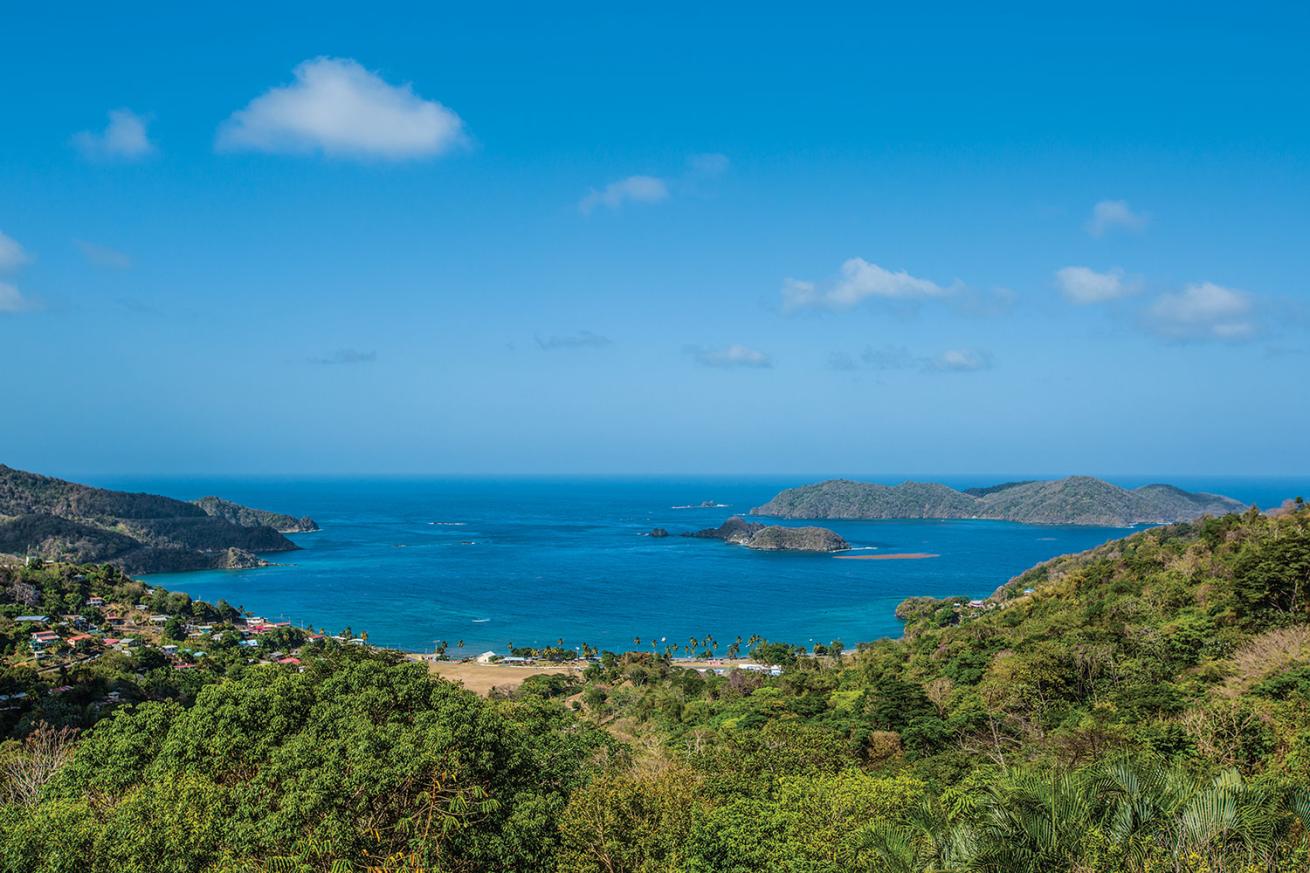
Andy SallmonMany international carriers fly into Trinidad, Tobago’s sister island. From there, it’s easy to catch a ferry or board Caribbean Airlines “air bridge” service.
When to Go: The dry season (December-June) often brings the best viz. Water temperatures generally stay in the low 80s Fahrenheit.
What You Need: Advanced certification is a good idea for some of Tobago’s more challenging sites. Bring or rent a surface marker buoy or other surface signaling tool.
Must See: Fort King George, which overlooks the bustling town of Scarborough, was built by the British in the 1770s and offers a glimpse of Tobago’s history along with sweeping ocean views.
Must Do: Attend Sunday School. In Tobago, this secular event consists of a raucous Sunday night beach party, complete with music, refreshments and jovial crowds. Held in Buccoo, these weekly celebrations are at their best around Easter.
Must Listen: The Republic of Trinidad and Tobago is the birthplace of calypso music, which you’ll hear blaring from every moving vehicle throughout your visit.
Operator: Blue Waters Dive’N at Blue Waters Inn.
Tuck In: Tobago
One universal truth about diving in the current: It gives everyone an appetite. Fortunately, Tobago has a thriving local street-food culture and is an outstanding place to be hungry. A word of caution: You might be eating with your hands, so you should probably avoid wearing your favorite white T-shirt. Here are a few of our favorite dishes.
Roti: Flatbread wrapped around curried meat and/or vegetables. The gloriously messy Buss Up Shut (translation: “busted-up shirt”) is a close relation: shredded roti bread tossed with curried meat and/or vegetables.
Pholourie: Fritters made from split-pea flour spiced with cumin and garlic — served hot with chutney.
Doubles: A typical breakfast street food, consisting of two pieces of fried flatbread filled with curried chickpeas and garnished with chutney and tamarind sauce.
Coucou: A polenta-like dish made with coconut milk, pimento peppers and okra.
Rock cakes: The local version of a scone, chock-full of grated coconut and raisins.

